Sally de Courcy
I am an artist and medically retired doctor interested in human rights. My artistic practice aims at challenging our perception of ourselves, our fragility and strength. My sculptures evolve by manipulating multiple cast objects so that the whole becomes greater than the sum of its parts. Using repetition as emphasis, the outcome has a decorative geometry and kinetic unity that expresses are shared human experiences and conditions.
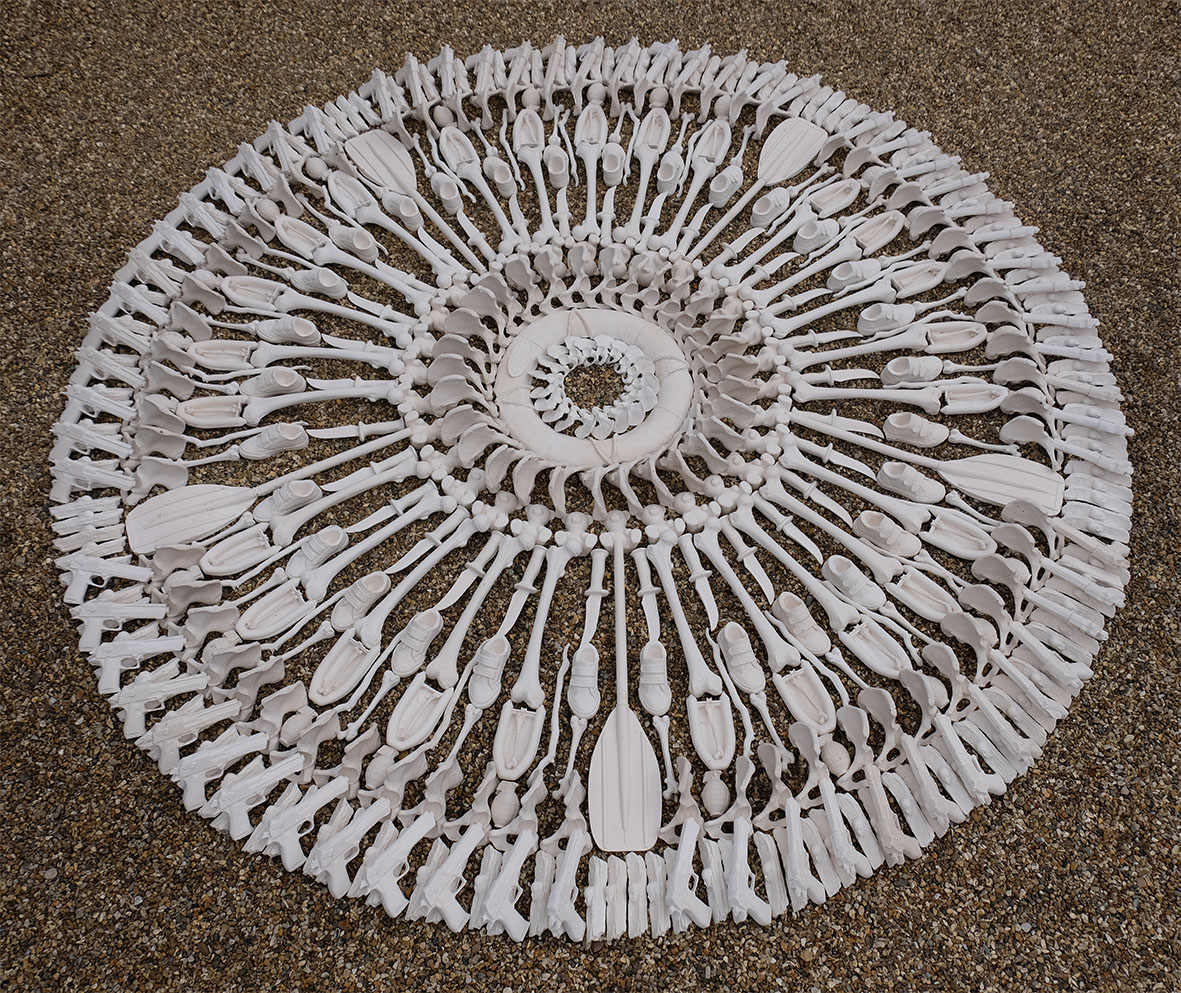
My aims are to be a voice
My aims are to be a voice for those who are treated as less than human. In 1984 I worked at Khao -I – dang 2 refugee camp in Cambodia as a young medic. This experience has resurfaced later in life through my art. I think like many artists there is a liminal space between conscious representation and subconscious influence. Recently having myself come from Kent I have been dismayed by the numbers trying to cross the channel in small boats. My most recent work is called The Colour of Mourning, which uses contextual cast objects to reflect the hazardous movement of refugees crossing the English Channel in escalating numbers to seek asylum in the UK after fleeing from war and persecution.

The numbers are rapidly increasing and have now surpassed 10,000.
It is not possible to apply for asylum outside the UK. In 2020 the closure of air and lorry routes to the UK during the pandemic increased four-fold the numbers crossing in small boats, one of the most dangerous shipping channels in the world. At least 8,400 people crossed in 2020, 10% of whom were children. The numbers are rapidly increasing in 2021 and have now surpassed 10,000. Since 1999 three hundred asylum seekers have died including 36 children. This is reflected in another recent work made of 300 pieces of cast driftwood and death mask like faces looking abjectly down in Three Hundred, Still Counting.
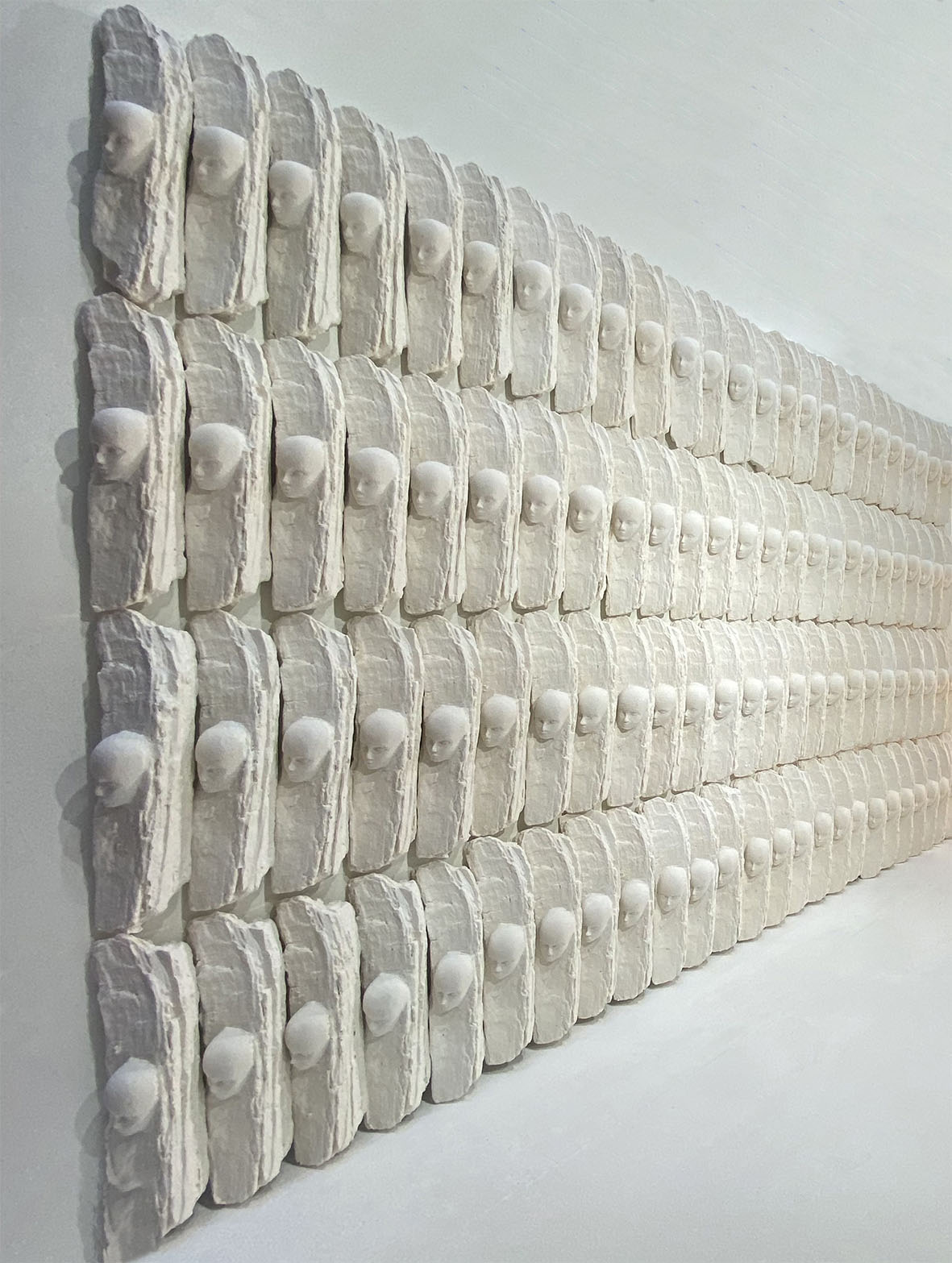
The Colour of Mourning uses contextual cast objects to reflect this hazardous movement of refugees crossing the English Channel, made worse by the people smugglers who often use cheap unseaworthy dinghies.
Precarious crossings
The precarious Channel crossing attempts are symbolised by a sardonic life buoy and the shocking reality of cast dinghies and symbolic paddles. Guns and grenades represent the violence of war and persecution and adult and child bones, reflect mortality and vulnerability. Children are represented by Teddy bears which are often left where children have met a tragic end. Tiny velcro trainers acknowledge the iconic photo in 2015 of Aylan Kurdi. Finally cast driftwood with faces are emblematic of the waves of refugees arriving on English beaches.
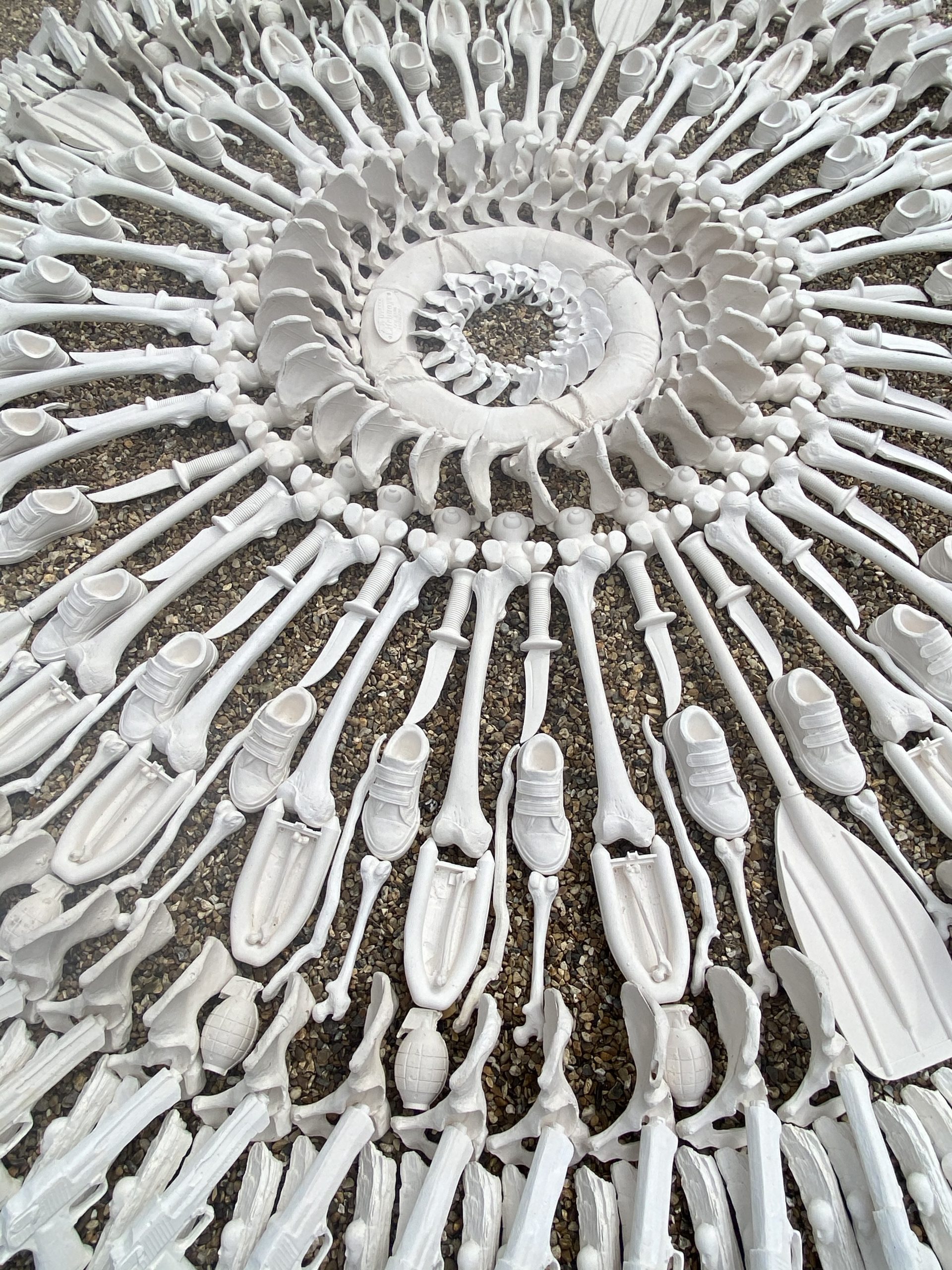
In some ways I see my work as a reportage, and I aim through the narrative of the work, to broach sometimes difficult or uncomfortable subjects, for it to be open to discussion. Research becomes very important. For example, I used the iconic image of the Syrian toddler Aylan Kurdi’s body washed up on a Turkish beach. This image made global headlines and created a subsequent international response to the refugee crisis in Europe. I was struck by the tiny Velcro trainers in this image which I reproduced.
An ironic mandala
Thinking about work I will consider all the objects that I could use to reflect facts I have found out in my research or have read about in media or have witnessed. The final form of installation or sculpture becomes almost accidental as I manipulate the objects in the studio. Sometimes the objects will be hidden in an overall arrangement such that the viewer needs to interact with the work to find the narrative. Often the overall structure will also reflect the subject, for example the cast objects in The Colour of Mourning are arranged in an ironic mandala, reflecting the repetition of life and history, but also the circle reflects the movement of wheels and journeys made, cogs functioning because of actions by others and the constant movement of refugees. The objects are rendered like bone, emblematic to my work, and are white reflecting the colour of mourning in many cultures.

Research is both practical (rearranging the cast objects in the studio) and theoretical. I have been strongly influenced by philosophical texts looking into repetition of violence throughout history particularly Zizek and Butler. I am also interested in the work of artists Doris Salcedo, Mona Hatoum and Ai Wei Wei, who transcend their autobiographical experiences to comment on thematic human issues. Because a lot of my work is quite current in terms of subject matter, I also save a lot of articles from newspapers. I have found the Migration Observatory at Oxford University refugee study centre helpful.
I had volunteered for Care for Calais just before the pandemic but unfortunately Covid 19 stopped this, but I hope to volunteer in the future. These desperate people that include children deserve humanity and respect not a terrible death in the English Channel. Zizek states in his text Six Sideways of Violence, that for the repetition of violence and persecution of others to stop, it is not enough to be tolerant of others we need to have acceptance.
Images and text courtesy of Sally deCourcy ©2021

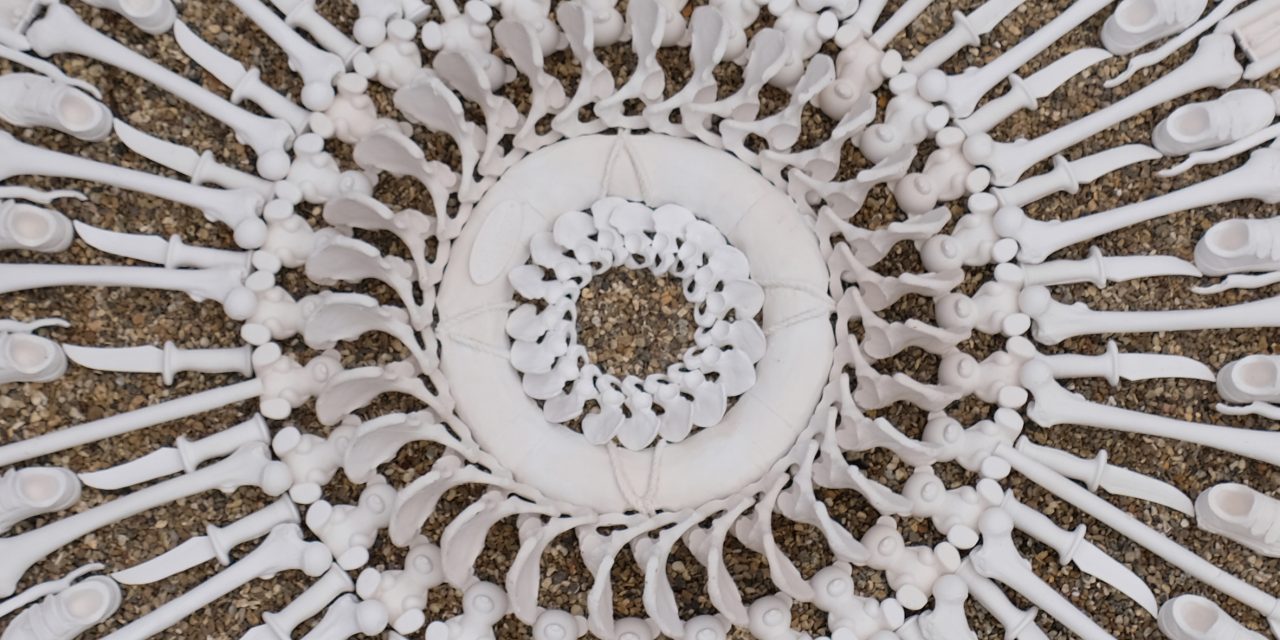

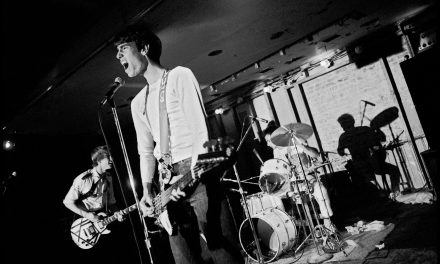
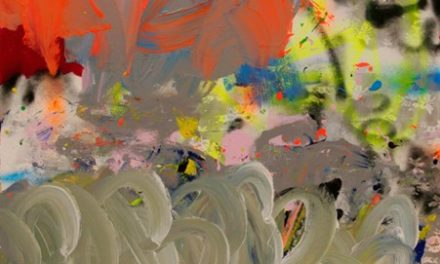
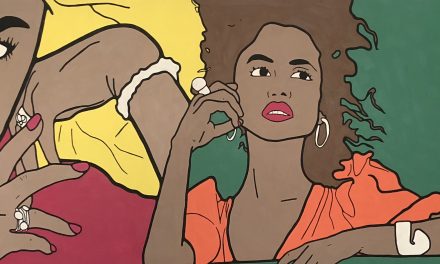
Recent Comments